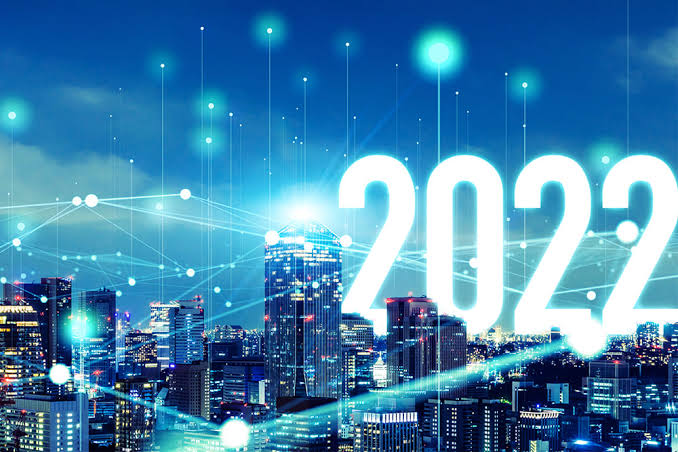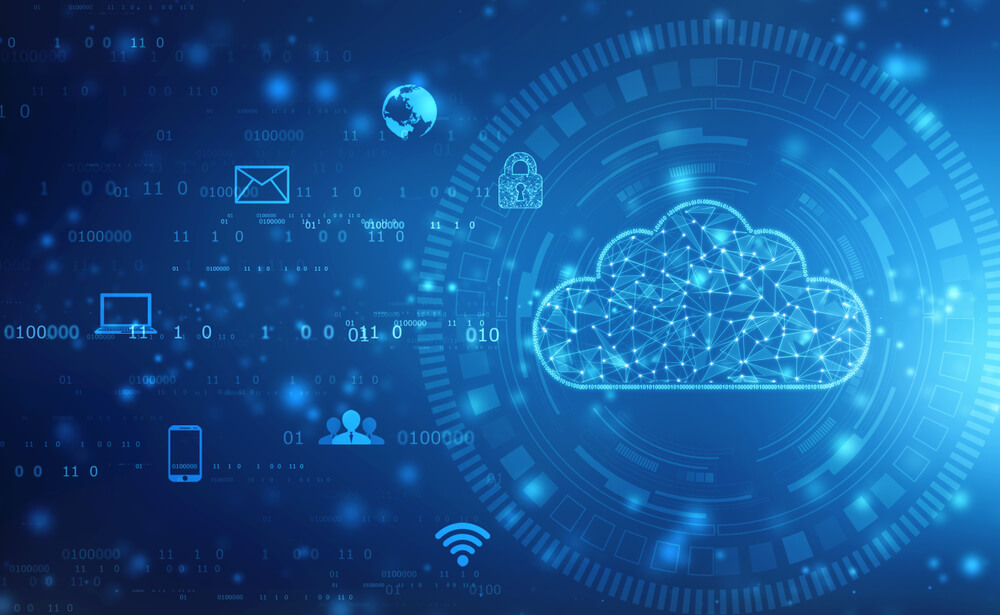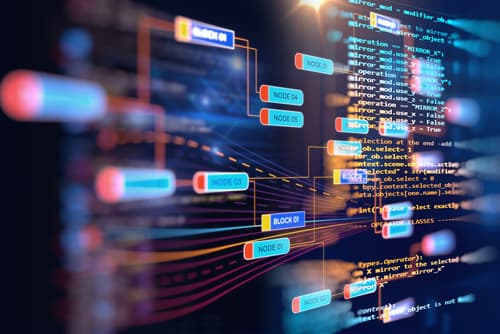The most prominent technology predictions for 2022

Technology does not stop developing, and it is a very important and pivotal sector currently and intersects with various other sectors, and there is no commercial, educational or societal sector that will not benefit from this development.
In this article, we will talk about the best technology predictions for 2022 and what experts expect to happen on the scene over the next year:
Communication and the Internet are in greater development and spread

The past two years have shown us the critical importance of connectivity and internet connectivity, if the COVID-19 virus had occurred 20-30 years ago the situation would have been more complex than it is today.
Today, many industries have been able to operate by making only minor adjustments to their processes, and scientists from all over the world have come together to develop medicines.
We can shop, have fun and learn new things while staying at home, so what will the mobile phone companies do? Well, they will continue to replace them with physical hotspots with digital hotspots.
This will reduce cost and time for support and sales, and all digital networks operate in the public cloud and are easier and faster to manage than a complex, distributed physical infrastructure.
Companies that have relied on MPLS (Multi-Protocol Label Switching) are now turning to SD-WAN (Software Defined Wide Area Networks), which can make infrastructure more flexible and scalable at a lower cost.
However, there are challenges: there are no unified APIs that can define industry standards, and make it easier to buy and sell connections between different vendors.
Fifth generation technology will improve mobile communication

Countries will continue to roll out 5G, according to Statista. 5G subscribers will reach 1 billion in 2022. However, red tape and delays have helped the growth of another communications channel: satellite internet.
Satellite Internet, provided by Starlink and SpaceX, will help spread mobile Internet to remote areas According to Forrester analysts, 85% of satellite users will live in rural areas, this means that there will be more mobile Internet users and this is news good.
For example, children in remote areas will get more education opportunities, and it will drive the development of mobile phone services, providing a special boost to applications for delivery, education and entertainment.
The Internet of Things is facing a major challenge
 According to Forrester analysts, the Internet of Things (IoT) will continue to evolve, but the lack of chips will slow the overall market growth by 10-15%.
According to Forrester analysts, the Internet of Things (IoT) will continue to evolve, but the lack of chips will slow the overall market growth by 10-15%.
The shortage of necessary semiconductors has been going on since February 2021, and nothing is likely to change until mid-2023, so prices for IoT devices will continue to rise and availability remain low.
The Internet of Things is likely to suffer more than consumer devices as it uses more sensors, microcontrollers, and communication technologies.
This means that the industry will be more affected by the lack of chips. At the same time, the demand for sustainable development services for the Internet of Things is expected to increase in 2022 to improve energy efficiency and resource management. These technologies can be used for environmental monitoring, resource management and supply chain operations.
Paid services without ads
 Free services and social networking will continue to operate, but we can expect to see an increase in ads, and users will increasingly be offered transparent paid services, such as ad-free news articles, paid YouTube and Facebook services and paid training resources.
Free services and social networking will continue to operate, but we can expect to see an increase in ads, and users will increasingly be offered transparent paid services, such as ad-free news articles, paid YouTube and Facebook services and paid training resources.
At the same time the influence of paid subscribers will increase, Netflix is no longer just a recommendation system, it is also a studio that knows what to shoot and what is required, and accordingly makes the right decision overall.
Basically we will co-create the content by prepaying for it, and the consumption of ad-free content will generally rise.
Increasing adoption of cloud computing

The pandemic has significantly accelerated the transition of large and medium-sized companies to the cloud. In the past, large companies adopted these technologies gradually, step by step.
Now operations have accelerated dramatically, and traditional corporate IT infrastructures will be moved to the cloud at faster speeds and with greater enthusiasm The leading cloud providers (Amazon Web Services and Microsoft Azure) have made a lot of money and strengthened their position.
Google ranks third, but Forrester analysts believe the company won’t be able to catch up unless it becomes a major software-as-a-service provider, however if it succeeds, Google will come under more scrutiny by regulators.
Geopolitical news may also affect the cloud computing market, and here we find that China and more countries are demanding localization of their data. According to Canalys data, Alibaba Cloud Aliyun leads China with a 40% market share, while the country is investing in innovation.
Other Chinese market leaders are Huawei and Tencent with Chinese providers likely to start looking beyond the massive domestic market, although they are unlikely to battle AWS and Microsoft in the US and Europe.
Aside from the fact that the existing players have already established their dominance, these regions are unlikely to have a high level of confidence in the Chinese cloud, however there are a large number of emerging markets where technology penetration is low and there is no clear leader.
Big data and analytics

It is likely that around this time next year, an article like this can be written using predictive analytics, and it will be developed against the background of big data and business analysis.
In a sense, we’re already using it because a lot of organizations, including analytics agencies, are using big data analytics to predict potential future trends.
This means using a massive amount of data from the market, new customers, the cloud, apps, social media, or products to perform predictive analytics.
Large and medium-sized organizations operating in technology, finance and retail are likely to significantly increase their business intelligence analytics budget.
The growth of artificial intelligence in services and products
 Sundar Pichai, CEO of Google, believes that AI will trump fire and electricity when it comes to its impact on human development. This may be an exaggeration, but even today AI affects us more than it appears at first glance.
Sundar Pichai, CEO of Google, believes that AI will trump fire and electricity when it comes to its impact on human development. This may be an exaggeration, but even today AI affects us more than it appears at first glance.
AI already shapes what we see on social networks and ads, and thus influences our choices.
This is of course a rather scary trend, however there are also good points, for example AI is being used to help discover medicines, explore space and combat climate change.
In the near future, tools and services will be developed to help us work more efficiently. We are actively using them in system administration, diagnostics, and marketing. “Home” AI will become more common, and its impact will become evident even for people who are not familiar with IT.
What else indicates that artificial intelligence will develop actively? One such example is Mark Zuckerberg and the mysterious Metaverse.
Despite the fact that many took this initiative with a sense of humor, and this led to the emergence of many memes, such statements were not made just for fun.
Remember that Metaverse is seen as a unified digital environment in which users can exist, work and play together, if you’ve read the book (or watched the movie) Ready Player One, we’re talking about something similar, and simply waiting to be the Web 3.0 that will change a lot in the







